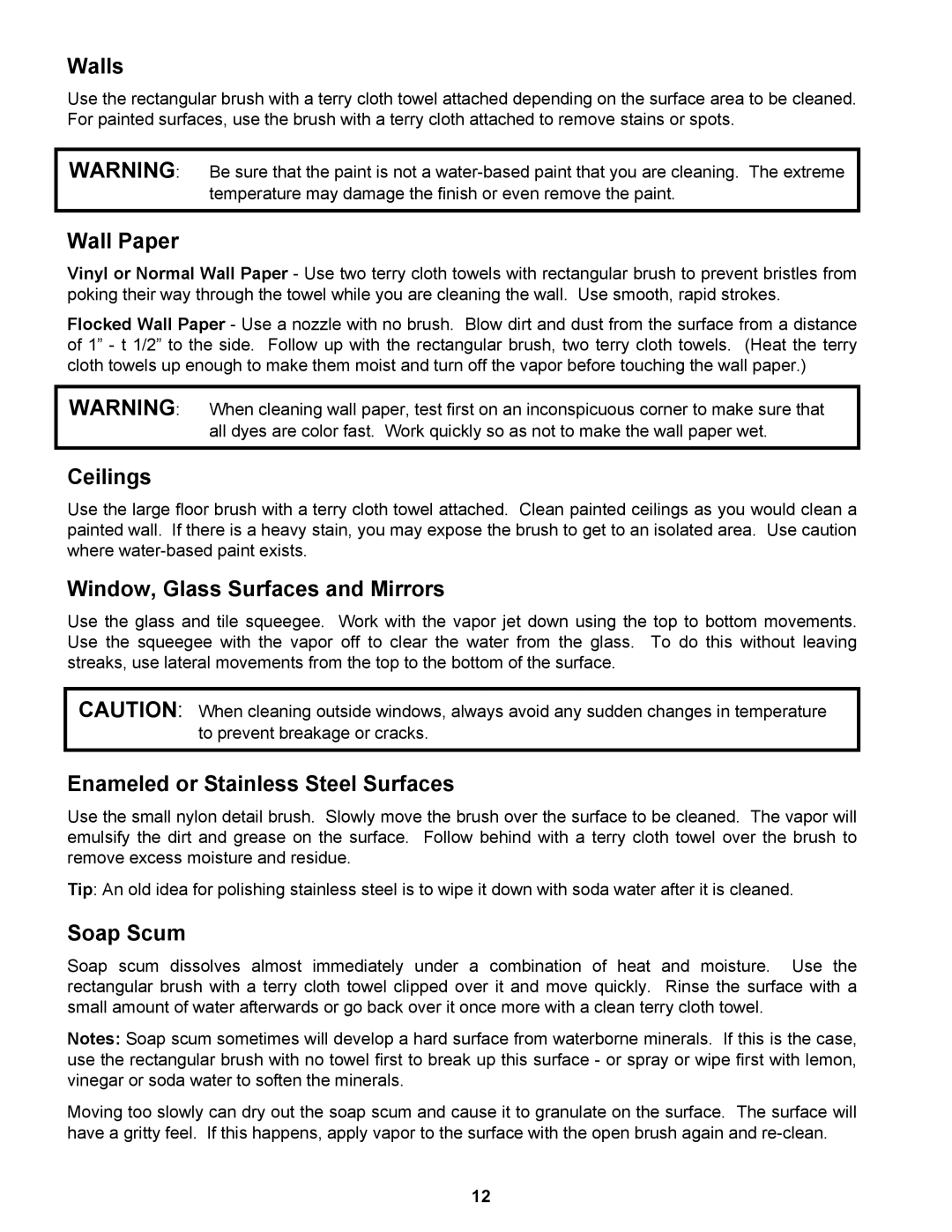
Walls
Use the rectangular brush with a terry cloth towel attached depending on the surface area to be cleaned. For painted surfaces, use the brush with a terry cloth attached to remove stains or spots.
WARNING: Be sure that the paint is not a
Wall Paper
Vinyl or Normal Wall Paper - Use two terry cloth towels with rectangular brush to prevent bristles from poking their way through the towel while you are cleaning the wall. Use smooth, rapid strokes.
Flocked Wall Paper - Use a nozzle with no brush. Blow dirt and dust from the surface from a distance of 1” - t 1/2” to the side. Follow up with the rectangular brush, two terry cloth towels. (Heat the terry cloth towels up enough to make them moist and turn off the vapor before touching the wall paper.)
WARNING: When cleaning wall paper, test first on an inconspicuous corner to make sure that all dyes are color fast. Work quickly so as not to make the wall paper wet.
Ceilings
Use the large floor brush with a terry cloth towel attached. Clean painted ceilings as you would clean a painted wall. If there is a heavy stain, you may expose the brush to get to an isolated area. Use caution where
Window, Glass Surfaces and Mirrors
Use the glass and tile squeegee. Work with the vapor jet down using the top to bottom movements. Use the squeegee with the vapor off to clear the water from the glass. To do this without leaving streaks, use lateral movements from the top to the bottom of the surface.
CAUTION: When cleaning outside windows, always avoid any sudden changes in temperature to prevent breakage or cracks.
Enameled or Stainless Steel Surfaces
Use the small nylon detail brush. Slowly move the brush over the surface to be cleaned. The vapor will emulsify the dirt and grease on the surface. Follow behind with a terry cloth towel over the brush to remove excess moisture and residue.
Tip: An old idea for polishing stainless steel is to wipe it down with soda water after it is cleaned.
Soap Scum
Soap scum dissolves almost immediately under a combination of heat and moisture. Use the rectangular brush with a terry cloth towel clipped over it and move quickly. Rinse the surface with a small amount of water afterwards or go back over it once more with a clean terry cloth towel.
Notes: Soap scum sometimes will develop a hard surface from waterborne minerals. If this is the case, use the rectangular brush with no towel first to break up this surface - or spray or wipe first with lemon, vinegar or soda water to soften the minerals.
Moving too slowly can dry out the soap scum and cause it to granulate on the surface. The surface will have a gritty feel. If this happens, apply vapor to the surface with the open brush again and
12
